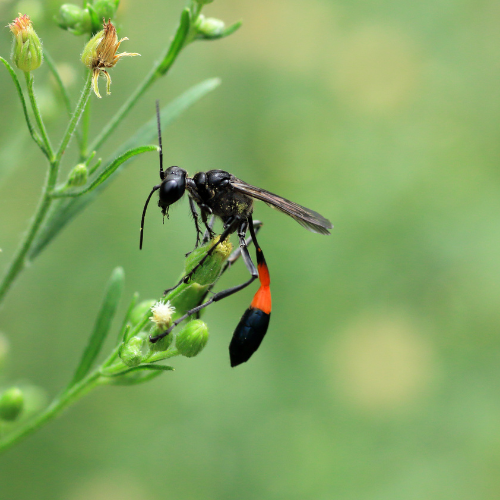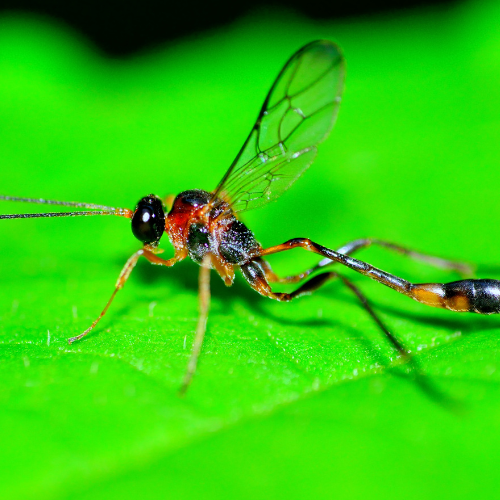Mud Daubers
Introduction to
Mud daubers are solitary wasps known for their distinctive mud nests. While they are generally not aggressive and can be beneficial by controlling spider populations, their nests can become a nuisance when built on homes and other structures. This guide provides detailed information on how to recognize, understand, and manage mud daubers, including preventive measures and professional pest control solutions.
Recognition
Mud daubers are slender, solitary wasps, typically measuring about 1/2 to 1 inch in length. They have a distinctive thread-like waist that separates their thorax and abdomen. Their color varies by species but is generally black or metallic blue, sometimes with yellow or green markings. Mud daubers are known for their unique mud nests, which are often tubular or organ-pipe shaped, built on walls, ceilings, and other structures. Unlike social wasps, mud daubers do not live in colonies and are usually seen working alone.
Biology
Mud daubers belong to the family Sphecidae and are solitary wasps. A female mud dauber builds a nest out of mud, creating individual cells where she lays a single egg. She then hunts for spiders or other small insects, paralyzes them with her sting, and places them inside the mud cell as food for the developing larva. The larva feeds on the prey, pupates inside the cell, and eventually emerges as an adult wasp. Mud daubers go through complete metamorphosis, developing from eggs to larvae to pupae to adults. They have one to two generations per year, depending on the climate.
Habits
Mud daubers are generally non-aggressive and rarely sting humans. They are beneficial insects because they help control spider populations. Mud daubers prefer to build their nests in sheltered areas, such as under eaves, in attics, garages, or on the walls of buildings. They are often found in areas near water sources, which they use to collect mud for nest-building. Mud daubers are solitary hunters, and their nests can be identified by the distinctive mud tubes or structures attached to surfaces. Once the nest is complete and provisioned with prey, the female seals the cell with more mud.
Prevention
Preventing mud dauber infestations involves making your property less attractive to these wasps and regularly removing nests. Start by inspecting your property regularly for mud dauber nests and removing them promptly before they become active. Use a putty knife or similar tool to scrape off the nests and dispose of them. Next, seal cracks, gaps, and other potential entry points in walls, ceilings, and around windows and doors to prevent mud daubers from entering structures to build nests.
Professional
When mud daubers become a persistent problem, professional pest control services can offer effective solutions. STL Pest Control provides comprehensive inspections and tailored treatment plans to address mud dauber infestations. Their methods include safely removing nests, using insecticides if necessary, and implementing preventive measures to deter future nesting. Professional services ensure that the infestation is managed efficiently and safely, minimizing the risk to humans and pets while respecting the beneficial role of mud daubers in controlling other pests.



Our Office









